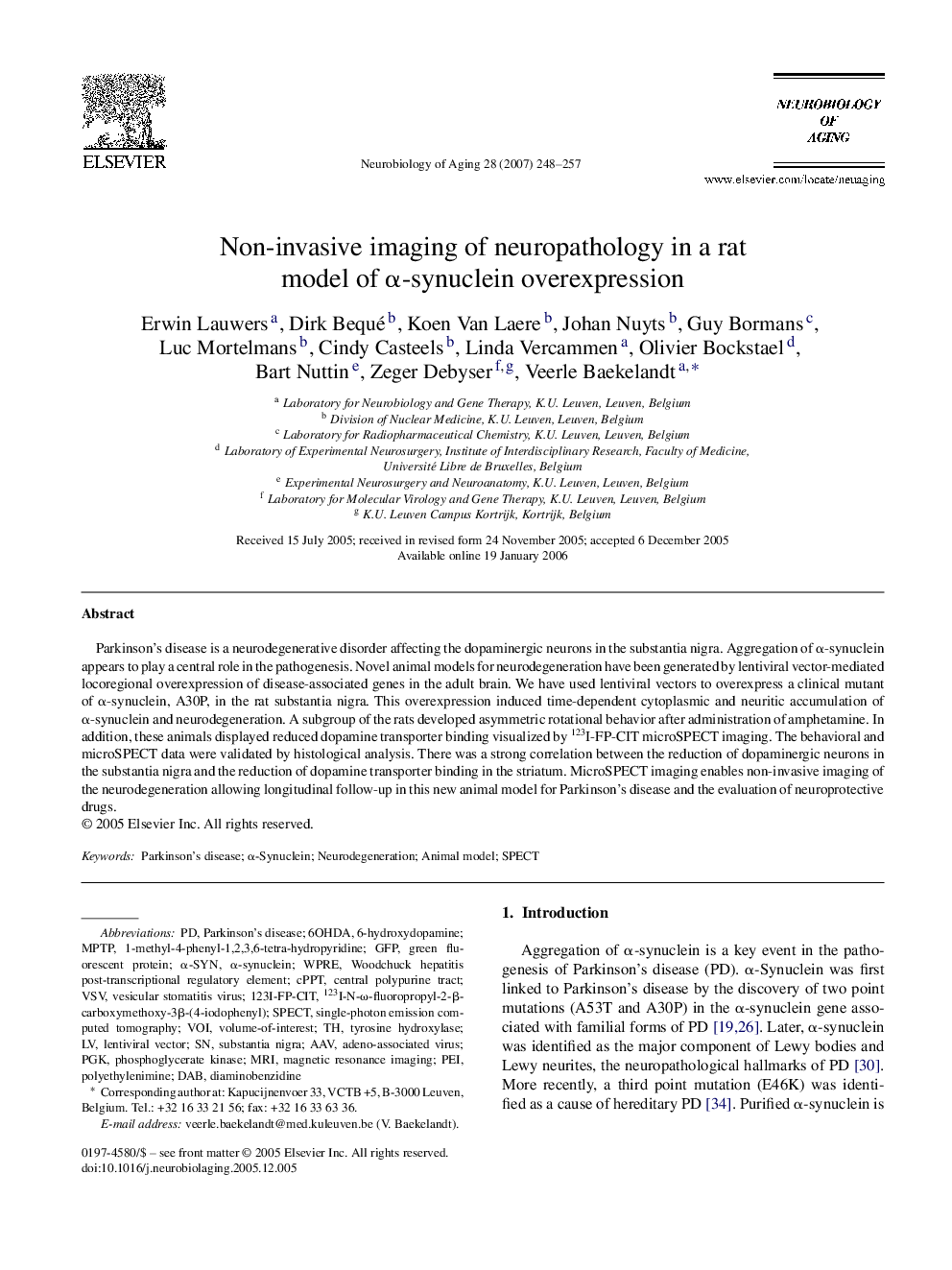| Article ID | Journal | Published Year | Pages | File Type |
|---|---|---|---|---|
| 329527 | Neurobiology of Aging | 2007 | 10 Pages |
Parkinson's disease is a neurodegenerative disorder affecting the dopaminergic neurons in the substantia nigra. Aggregation of α-synuclein appears to play a central role in the pathogenesis. Novel animal models for neurodegeneration have been generated by lentiviral vector-mediated locoregional overexpression of disease-associated genes in the adult brain. We have used lentiviral vectors to overexpress a clinical mutant of α-synuclein, A30P, in the rat substantia nigra. This overexpression induced time-dependent cytoplasmic and neuritic accumulation of α-synuclein and neurodegeneration. A subgroup of the rats developed asymmetric rotational behavior after administration of amphetamine. In addition, these animals displayed reduced dopamine transporter binding visualized by 123I-FP-CIT microSPECT imaging. The behavioral and microSPECT data were validated by histological analysis. There was a strong correlation between the reduction of dopaminergic neurons in the substantia nigra and the reduction of dopamine transporter binding in the striatum. MicroSPECT imaging enables non-invasive imaging of the neurodegeneration allowing longitudinal follow-up in this new animal model for Parkinson's disease and the evaluation of neuroprotective drugs.
